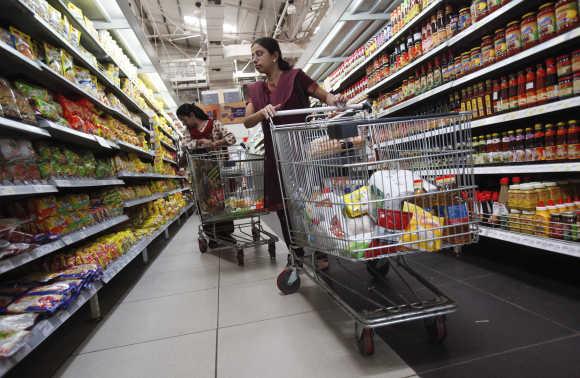
In fact we can see this shift most apparent in what we eat and drink on a day-to-day basis. For example, the shift from squashes to carbonated soft drinks to juices, from glucose biscuits to cookies, from polypack to tetrapak milk, from palm oil to refined vegetable oil to heart healthy oil.
This trend has given rise to a sizeable premium segment in multiple food and beverage categories. In fact some categories have evolved riding on this trend. The premium food and beverage market in India had reached a market size of Rs 140 billion in FY2011, more than 10 per cent of the total market.
In the past, this premium segment in branded F&B products was niche due to low levels of affordability, acceptability, availability and awareness which are the key drivers in the F&B landscape. This led to the share of this segment being below one to two per cent at an overall level till about five to six years back.
...

Positive demographic shifts are forming the basis for a turnaround across all these 4As, thus driving consumption for this segment. Increasing incomes, faster urbanisation, younger population, more working women, smaller families are driving affordability and acceptability.
The spread of modern trade and refurbishing of stand-alone self service outlets has provided a fillip to availability of these products. Emergence of niche, focused media vehicles has also played an important role in this evolution, for example the TV channels targeting the urban upper middle class or social media where the youth of today spend a lot of their time. They have provided a viable platform for creating awareness.
From the overarching trends impacting the overall F&B market, we believe that three trends will be enablers for future growth of the premium segment.
This would be in addition to the premiumisation trend in itself which has been discussed earlier: Health and wellness: Growing awareness of health and wellness and rising incidences of lifestyle diseases would drive the consumption of categories such as olive oil, sugar substitutes as well as health and wellness offerings within categories such as salt and juices/juice drinks.
Convenience: Changing household profiles and busy lifestyle are expected to propel the need for convenience leading to increased consumption of categories such as RTE and UHT milk.
...
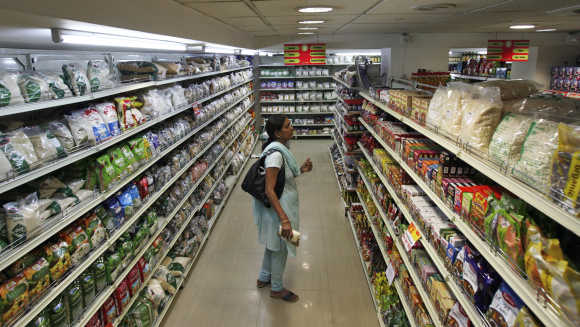
Western influence: Rising acceptance of Westernised products is expected to drive the consumption of categories such as breakfast cereals. There are expected to be 5.3 million households in FY2016 with average incomes equal or higher than the average income in the United States (on a PPP basis).
Their consumption patterns would be similar to those in the United States (and in other developed markets). These households would be at the forefront of new category adoption and thus would be lead users for the premium F&B segment. Tata strategic research suggests that this premium segment is expected to reach a market size of Rs 450 billion by FY2016, that is 16 per cent of the total market.
In large categories like biscuits, the share of premium is expected to increase from Rs 10 per cent to Rs 21 per cent between FY2011-16. We are likely to see growth of multiple premium categories like premium yogurt drinks, functional beverages, smoothies and seasonings which are available today in a limited manner.
...
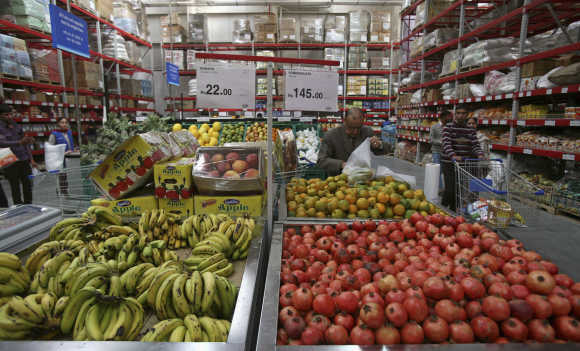
Share of modern trade in the F&B market will go up in coming years. This share would be much higher for the premium segment given overlap of the target segment of these categories and the footfalls into the modern trade outlets.
Already in certain urban centric premium categories like ready meals, noodles, sauces and soups, modern trade constitutes more than a quarter of the overall market. How should companies effectively target the premium F&B market in India?
Extending a traditional FMCG mindset for the premium F&B market is more likely to make the business model inefficient and/or ineffective for any company with ambition in this segment. The starting point is like any other business entry decision. The company needs to have a clear understanding of its business intent from the Indian market and also broad level boundary conditions that might be at play because all investment decisions would need to be made in that context.
Having identified the target consumer segment and their need gap, an unbiased view on the market opportunity needs to be formed. A syndicated research exercise could provide significant confidence with respect to the validity of the concept.
...
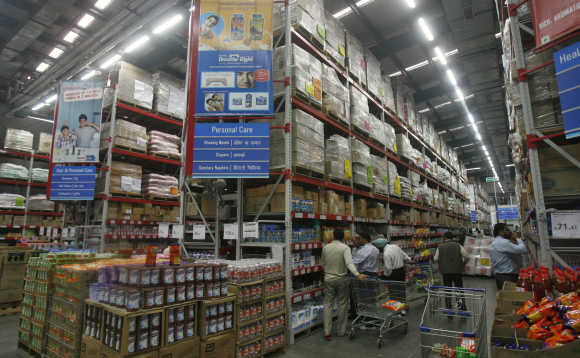
Our experience indicates that consumer research output coupled with India market trends and discontinuities, global learnings and surrogates provide a sound basis to assess the market opportunity.
The importance of having the right price point should not be under-estimated even in the premium segment. There could be a case where in the company would import finished products in the near term with plans to shift to India manufacturing in a gradual manner.
The long term pricing strategy should be thought through and implemented from launch to avoid any pricing related backlash from the market.
The distribution of such products needs to be highly targeted, focused on modern trade outlets and top groceries in the more than 10 lakh population cities. The phasing in of the number of cities and penetration within each city would vary by category, target consumer and proposed price-value equation.
Existing players could look to set up a separate channel for premium products to bring focus into distribution by sales like Pepsi has done for its Tropicana brand.
A widely exercised option by existing large players is to create appropriate check mechanisms in an as-is channel that the product reaches the right outlets and is showcased effectively.
...

Newer, smaller players entering this market have traditionally adopted the importer route. In fact even for a global brand like Pringles, P&G had adopted an importer route even while having a large on-going Indian operation.
Premium brands tend to have lower marketing budgets vis-a-vis mass brands given their smaller size. Hence effective utilisation of low cost BTL activities become critical. Incase it is a newer product offering in the market, sampling activities become critical, especially in initial years. Incase the product is established and the brand premiumness needs to be established, then shopper experience zones in modern trade could be effective.
Digital media which typically plays a supporting role could easily be the cornerstone for any branding strategy in this segment.
...
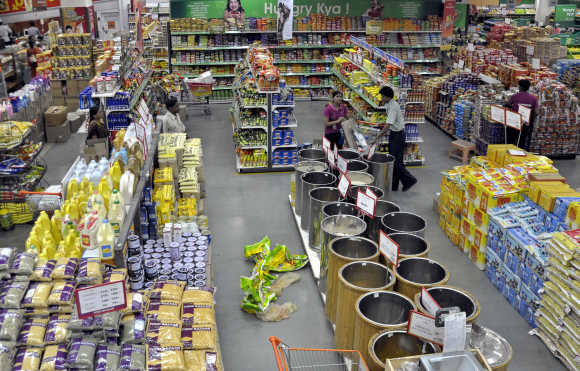
Brands which are well recognised globally have a clear advantage here. Pringles, Nestle Coffee Drink, Ferrero Rocher are examples of such products who command shelf space with minimum brand building.
When it comes to the organisation, any new company should look to be lean initially and then gradually ramp up capabilities to avoid high corporate overheads. Traditional organisation structure frameworks would not be feasible.
The last few years has seen the premium segments in many F&B categories become sizeable. With players having realised this, the market shelves are expected to get increasingly cluttered. Traditional methods are likely to yield below par results.
Players should look to adopt a differentiated, targeted approach in all key business activities. That would provide them with a sound platform to cream the premium F&B market opportunity in India.
Rajiv Subramanian is principal, Rakesh Nag is consultant and Manmohan Agarwal is associate consultant, Tata Strategic Management Group